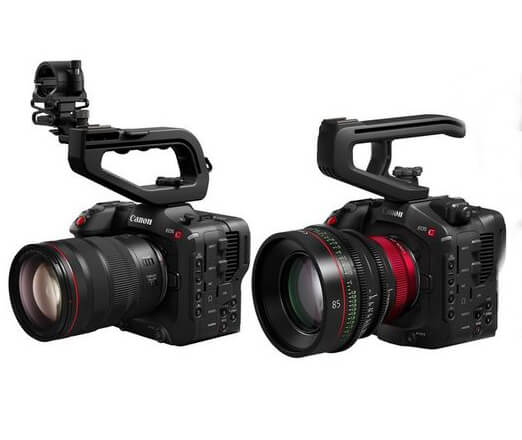To produce Omaha cinematic video wasn’t as easy when we first started as it is now. I remember when we started using the Sony PD150. Man, a great solid camera. And at the time it was being used as an independent film camera when the digital revolution was just kicking off. The image quality was really good. But it wasn’t perfect (however, a few years ago I turned it back on and thought the quality still looked really great). One draw back, it didn’t have a interchangeable lens which pretty much makes are breaks a camera. Neither did the next set of cameras we used, the Sony Z1U’s but they had better image quality.
And then in 2008, came the Canon 5d Mark 1 and changed about everything. It was a DSLR photography camera that had interchangeable lens and produced an image with amazing depth of field much like the image created by lens that would be used in Hollywood movies.
What a minute, what the heck is ‘Depth of Field’? Depth of field is how much of the image is in focus from front to back. A ‘shallow depth of field’ means only a small part of the frame is in focus while the background is blurry. This is what makes cinema cameras, like the ones thinkMOTION uses to make Omaha cinematic video, the best choice!
Why Using Cinema Cameras Matters in Video Production
In the fast-paced world of video production, the quality of your visuals can make or break the impact of your content. Whether you’re creating social media clips, corporate videos, or full-scale productions, the camera you use plays a crucial role in delivering a professional and cinematic look. While consumer and DSLR cameras have improved significantly, cinema cameras remain the gold standard for high-quality video production. Here’s why they matter:
1. Superior Image Quality
Cinema cameras are designed to capture stunning, high-resolution images with greater dynamic range and color depth. They offer superior sensor technology, allowing for better low-light performance, rich colors, and improved detail. This level of quality is essential for creating content that stands out in today’s saturated digital landscape.
2. Professional Codec and Bitrate
Unlike traditional consumer cameras, cinema cameras record in professional codecs such as ProRes, RAW, and other high-bitrate formats. Oh my gosh, did I lose you with the word ‘codec’ and ‘ProRes’?!! What does this have to do with Omaha cinematic video ? These formats retain more data, allowing for greater flexibility in post-production, including color grading, visual effects, and editing precision. With a higher bitrate, your footage maintains its integrity even after multiple rounds of processing.
3. Cinematic Depth of Field and Lens Compatibility
Cinema cameras support interchangeable lenses, allowing filmmakers to choose the perfect focal length and aperture for their shots. The ability to use prime and anamorphic lenses helps achieve a shallow depth of field, creating the professional, film-like aesthetic that audiences associate with high-end productions.
4. Advanced Dynamic Range and Color Science
A major advantage of cinema cameras is their ability to capture a wider dynamic range. This means they preserve more details in highlights and shadows, providing a more natural and immersive viewing experience. Additionally, cinema cameras are equipped with advanced color science technology, ensuring accurate and rich color reproduction that enhances the overall storytelling impact.
5. Robust Build and Customization Options
Cinema cameras are built for professional use, offering durable construction and modular customization options. They can be rigged with external monitors, follow focus systems, matte boxes, and professional audio setups, allowing for greater creative control and adaptability to different shooting environments.
6. Better Workflow for Editing and Post-Production
With cinema-grade footage, post-production becomes much more efficient. The higher-quality files allow for seamless color correction and visual effects integration. Since cinema cameras capture footage with a higher dynamic range, editors have more room to fine-tune the final look, ensuring the best possible output for any platform.
7. Elevating Your Brand and Credibility
If you’re a video production company or a content creator looking to establish credibility, using cinema cameras can set you apart from competitors. High-quality visuals not only enhance storytelling but also communicate professionalism and attention to detail—two factors that clients and audiences highly value.
Final Thoughts
All of these reasons is why we use cinema cameras in all our productions! Tt’s a commitment to quality and storytelling excellence. Whether we’re shooting brand videos, or social media content, the right camera can elevate your production and make a lasting impression. We’re serious about video production and using cinema camera is a game-changer that ensures your companies video will stand out in a crowded digital world.



